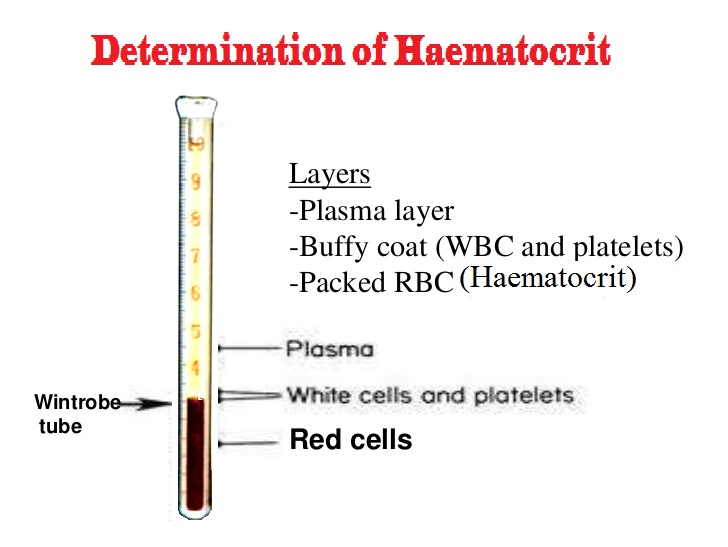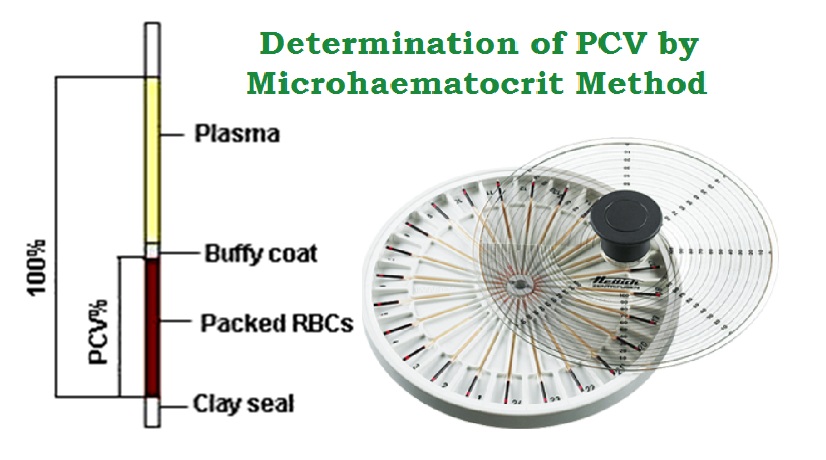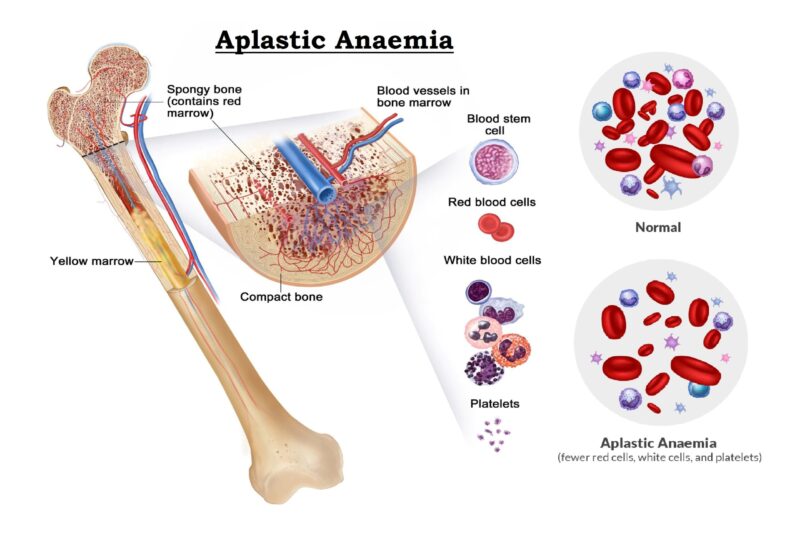Determination of Hematocrit (Packed Cell Volume)
Packed cell volume (PCV) is the amount of packed red blood cells following centrifugation, expressed as percentage (%) of the total blood volume.
Clinical Significance :
Decrease PCV are observed in the following conditions :
- Anaemia (Due to decrease hemoglobin concentration, decrease RBC count or Bone marrow depression etc.)
- Hydremia (excessive fluid in the blood as occurs in pregnancy).
Increase PCV are observed in the following conditions :
- Polycythemia.
- Dehydration.
- Emphysema.
- Congenital heart disease.
Normal value :
- Male : 42 – 52 %
- Female : 36 – 48 %
- Late pregnancy : 23 – 37 %
- At birth : 44 – 62 %
Method :
Two methods are used for determination of PCV in the laboratory :
- Macro-Haematocrit method.
- Micro-Haematocrit method.
- Electronic counter.
Commonly Macro-Hematocrit method is used for PCV determination but where not availability of require amount of blood there Micro-Hematocrit method is used for PCV determination.
Determination Of Hematocrit By Macro-Hematocrit Method

Principle :
When anticoagulated blood is centrifuged in haematocrit tube at high speed, the erythrocytes sediment at the bottom and the sedimented red cell column is called packed cell volume (PCV) or hematocrit (cell percentage volume).
Requirements :
- Wintrobe’s hematocrit tube.
- Pasteur pipette.
- Centrifuge machine.
Specimen :
Double Oxalated or EDTA anticoagulated venous blood (the specimen need not be a fasting sample).
Procedure :
- Gently mixed the blood specimen and labeled the hematocrit tube.
- Filled the blood into the Wintrobe’s hematocrit tube up to 100 mark by using a Pasteur pipette. (avoid formation of air bubbles into the tube).
- Centrifuged the tube with balanced tube at 3000 RPM for 30 minutes or 3500 RPM for 15 minutes in the centrifuge machine.
- Read the sedimented red cells layer and give the result as percentages (and multiply with 100 for volume percentages).
Special Note :
Note the following observations :
- Colour :
| Colour & opacity of plasma | Expected condition |
| Yellow | May be jaundice |
| Milky | Lipemia |
| Cloudy | May be multiple myeloma |
| Reddish | Haemolysis |
- Buffy layer :
Normally it is 0.5 – 1.0 mm. Each 0.1 mm = 1000 cells/cu.mm (approximately).
Precaution :
It is necessary to wash the Wintrobe’s tube immediately after examination by introducing a steel wire repeatedly in the tube under running tap water.
Determination Of Hematocrit By Micro-Hematocrit Method

Micro-hematocrit method is used for PCV determination where difficult in drawing suffices amount of blood. It is useful particularly in pediatric patients. Very small amount of blood is require for this method. This method is ideal for skin puncture.
Specimen :
- Double Oxalated or EDTA anticoagulated venous blood (use plain capillary tubes). Or
- Free flowing capillary blood (use heparinized capillary tubes).
Principle :
Blood specimen is centrifuged in a sealed capillary tube and Packed Cell Volume is determined by a special haematocrit reader and gives the result as percentage.
Requirements :
- Haematocrit centrifuge machine – run at a speed of about 15,000 RPM.
- Haematocrit reader – this is supplied by the manufactured.
- Capillary haematocrit tube – these are 75 mm in lengths and approximately 1.0 mm in diameter.
- Soft wax or modelling clay – this is used for seal the capillary tube.
- Marker pen.
Procedure :
- Draw the specimen in an appropriate capillary tube. Filled in the tube to about ¾ length.
- Sealed both the ends of the tube with soft wax or modelling clay by plugged to a depth of about 1.0 cm.
- Write Identification number on the tube by using a marker pen.
- Placed the tube with the similar balanced tube in the radial grooves of the centrifuge head exactly opposite to each other.
- Close the centrifuge cover and centrifuge the capillary tubes at 15,000 r.p.m. for 5 mins.
- Remove the capillary tube. It will show three layers – (a) clear plasma at the top, (B) whitish buffy coat at the middle and (c) column of red cells at the bottom.
- Hold the tube against the haematocrit reader and read the reading by the bottom of the red cell column is aligned with the horizontal zero line (execute the height of wax). The line that passes through the top or column of red cells gives the value of PCV (haematocrit). The result is given as percentages of whole blood.
Source of error :
- Haemolyzed specimen will gives false low values.
- In adequate mixing of blood and incompleteness of pricking may leads to erroneous results.
Disadvantages :
It requires a special centrifuge machine and disposable
capillary tube.





Hi, I think every one is getting more from this website, and your views are fastidious in favor of new visitors. many thanks
You’re so cool! I don’t believe I’ve truly read through anything like that before. So nice to discover another person with a few original thoughts on this subject matter. Seriously.. many thanks for starting this up.
This web site is one thing that’s needed on the web, someone with a little originality!
I was curious if you ever considered changing the layout of your blog?
Its very well written; I love what you’ve got to say.
But may be you could a little more in the way of content so people could
connect with it better. You’ve got an awful lot of text for only having 1 or 2 pictures. Maybe you could space it
out better?
Ӏt’s an аmazing article dеsigned for all the internet vіsitors; they will take upgraded knowledge from it I am sure.
Very quickly this web site will be famous among all blogging and site-building
people, due to it’s good content